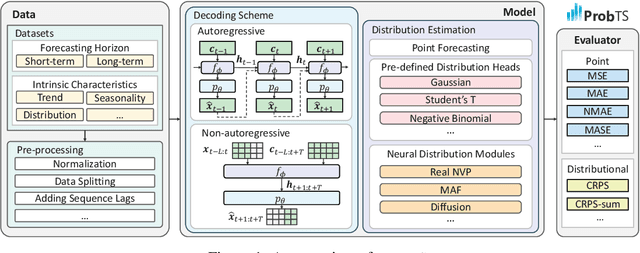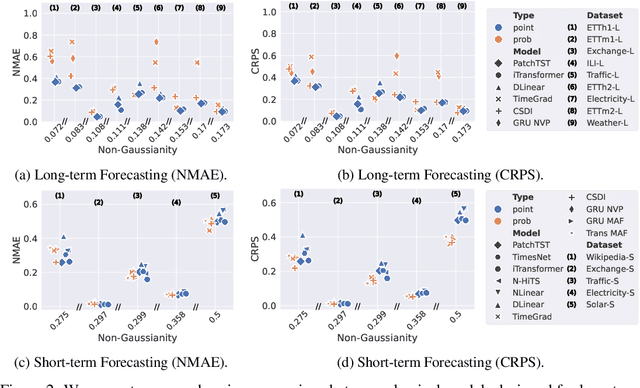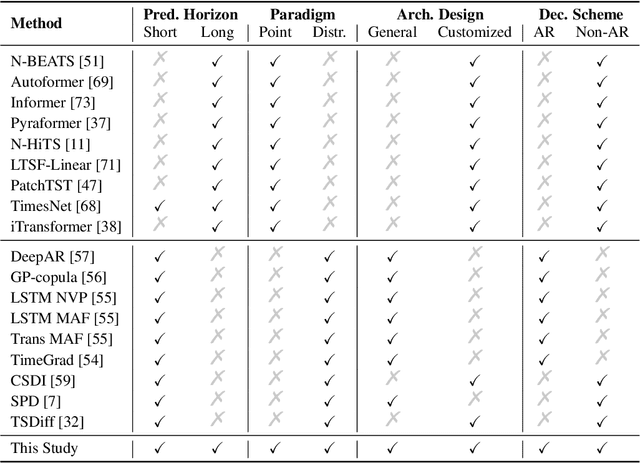ProbTS: A Unified Toolkit to Probe Deep Time-series Forecasting
Paper and Code
Oct 11, 2023



Time-series forecasting serves as a linchpin in a myriad of applications, spanning various domains. With the growth of deep learning, this arena has bifurcated into two salient branches: one focuses on crafting specific neural architectures tailored for time series, and the other harnesses advanced deep generative models for probabilistic forecasting. While both branches have made significant progress, their differences across data scenarios, methodological focuses, and decoding schemes pose profound, yet unexplored, research questions. To bridge this knowledge chasm, we introduce ProbTS, a pioneering toolkit developed to synergize and compare these two distinct branches. Endowed with a unified data module, a modularized model module, and a comprehensive evaluator module, ProbTS allows us to revisit and benchmark leading methods from both branches. The scrutiny with ProbTS highlights their distinct characteristics, relative strengths and weaknesses, and areas that need further exploration. Our analyses point to new avenues for research, aiming for more effective time-series forecasting.
 Add to Chrome
Add to Chrome Add to Firefox
Add to Firefox Add to Edge
Add to Edge